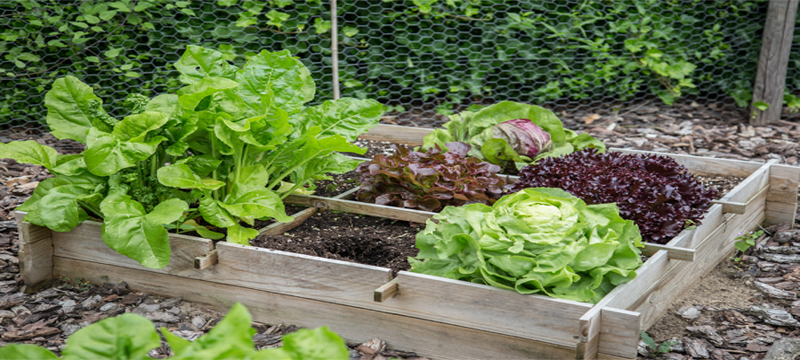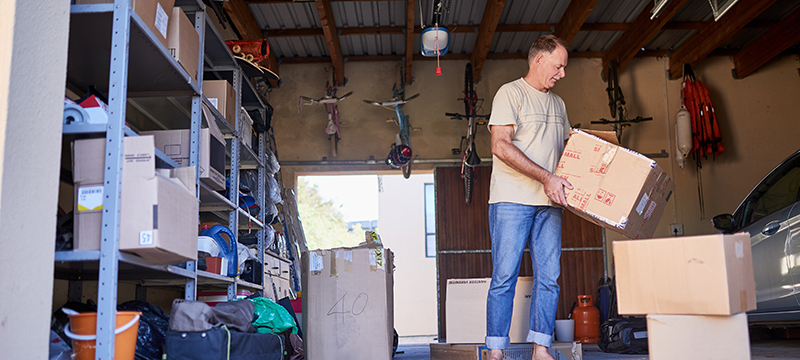Square foot gardening has revolutionized small space gardening since the early 1980s. With the recent increase in produce and grocery costs, square foot gardening has quickly become a buzzword as people are trying to find ways to reduce household costs. While the name implies the idea, let’s jump into more information, including what it is, how to do it, and a basic square foot gardening planting guide.
What is square foot gardening?
Square foot gardening, sometimes shortened to SFG, is the concept of using a 4×4-foot raised garden bed divided into 1-foot squares marked with lattice strips. If you don’t have room for a garden bed of that size, adjust your measurements to fit accordingly, such as 2×2 or 3×3. Beds should be between 8 and 12 inches deep to ensure the plants of plenty of room to grow. The idea was developed by Mel Bartholomew, a retired engineer and author, in the early 1980s. It’s great for beginner gardeners or those with little space, as there is no need for a big yard; food can be grown on balconies or patios. Those who have done this form of gardening say it’s incredibly easy and puts minimal strain on the body.
Square foot gardening setup
Setting up your garden is a straightforward process, requiring no special techniques to produce fruits and vegetables. If you plan to use more than one garden bed, plan to leave about 3 feet between them to make accessing them more manageable.
- Get your space set up
- Build or purchase a raised bed box that fits in your designated area.
- If you’re going to build your garden bed, check out these building plans from I Like to Make Stuff: https://iliketomakestuff.com/making-raised-garden-beds/
- Get your bed liner and preferred soil
- Grab some landscape fabric and line the box to prevent weeds from growing.
- Then fill with fertile potting soil; weed-free is the best option, as the fewer weeds, the better.
- Measure and place your square foot grid
Planting your produce
Once you have everything measured, you can begin planting. What you’re going to grow does take a little planning, but the spacing guidelines are pretty simple.
3″ spacing = 16 plants per square foot
Examples: carrots, radishes, chives, parsnips
4″ spacing = 9 plants per square foot
Examples: spinach, leaf lettuce, arugula, scallions, turnips, bush beans
6″ spacing = 4 plants per square foot
Examples: beets, garlic, leeks, shallots, onions, thyme, baby kale, parsley, swiss chard
12″ spacing = 1 plant per square foot
Examples: corn, broccoli, cabbage, eggplant, potatoes, cilantro, cauliflower, sweet potatoes, celery, brussel sprouts, full-size kale, lettuce heads, peppers, okra
18-24″ spacing = 1 plant per 2 square feet
Examples: small squash, asparagus
1 plant per 4 square feet
Examples: Tomatoes, large squash, melons
1 plant per 9 square feet
Examples: zucchini, bush squash
Tips for Success
- Use a pruner to harvest and prune regularly. Makes sure to know how to prune correctly before starting.
- Use trellises to support vining or climbing crops such as pole beans, cucumbers, and squash.
- Mulch your garden to retain moisture and provide nutrients to your produce.
Frequently asked questions
What is the best soil for square foot gardening?
A classic soil mix containing equal parts peat moss, vermiculite, and compost works best to keep plants healthy and growing.
Can you grow flowers in square foot garden?
Absolutely! Just be sure to understand the size of the plant at maturity to correctly plan the spacing.
How often do I water a square foot garden?
For the first few weeks, the garden should be water about 1 inch per square foot per week. Once flowers or fruit begin to appear, 2 inches per square foot per week is needed.
Should I rotate my plants yearly?
Avid gardeners will tell you that plant rotation is important and that crop rotation should happen yearly to prevent pest and disease build up in the soil.




